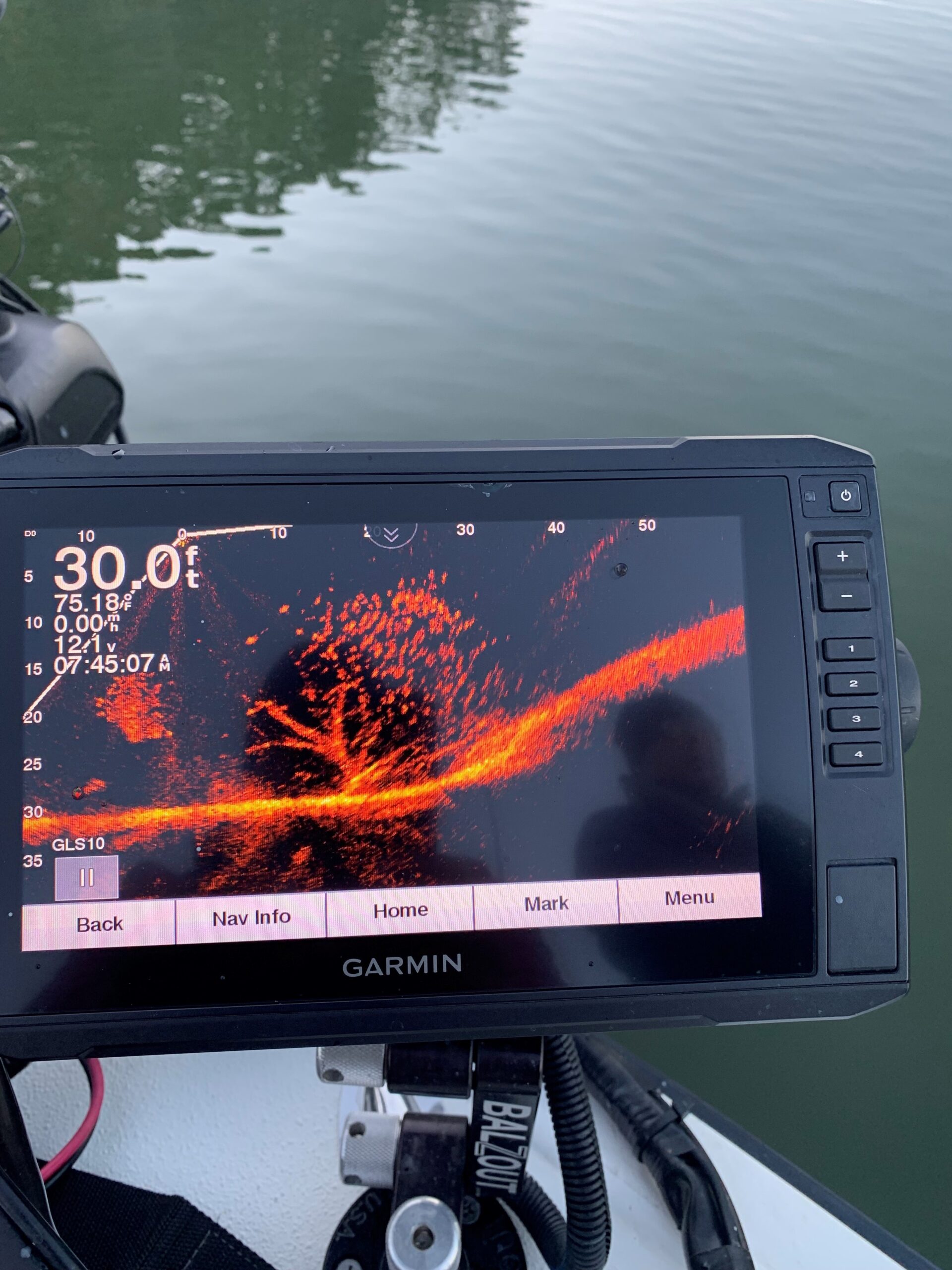CRAPPIE FISHING IS MY THERAPY
Dan Saknini
Lake Lanier is a little over 37,000 acres, with 692 miles of shoreline at full pool. For some fishermen, it can be quite intimidating to figure out how to fish a lake of this size. Certain parts of the lake on the south end are very deep – up to 160 feet. This is definitely not the best area to fish for crappie, or in general most other species either. The comfort zone for Crappie is generally 35 foot depths or shallower. The depth the fish are found is directly related to water temperature. Lake Lanier is fed by two major rivers, the Chattahoochee and the Chestatee, and a myriad of creeks. Fishing in the creeks that feed into the rivers offers the highest probability of finding Crappie. Baitfish locations are the best indicator of Crappie habitat. Crappie generally feed on threadfin, blueback herring, plankton, and new hatches of a variety of species.
The average lifespan of a crappie is five years. An average female will lay 5,500 eggs per season. Less than 5% of the eggs will hatch, and only a small number of hatchlings will survive the predators. That sounds bad, but it is mother nature at work. Although there are predominantly two species of crappie (black crappie and white crappie), there is a third group called black-nose crappie. It looks like you took a sharpie and drew a line from the tip of its mouth to its dorsal fin. I caught two this year, and quickly took a picture and returned each to the water. They are pretty rare in Lake Lanier. The Crappie population in Lanier is predominantly Black Crappie. Our black crappie have variations in color. In the winter when they go deeper to escape the colder surface temps, they become much more pale. However once you put them in your live well, they quickly regain much of their color. The same thing happens if you catch them in shallow muddy water – they also are more pale then, losing their brilliant color. In spring, when the surface water temps reach the upper 50’s to mid 60’s the female crappie begin to spawn. This does not happen all at once, but occurs over about a month, with some spawning earlier than others. The females will hit the spawning grounds in the backs of the creeks, lay their eggs and pull out. The males will fertilize and guard the eggs. That’s when you see fishermen catching the dark black-purple crappie on the banks of the lake. There’s an old myth that circulates that says “when the dogwoods bloom, it’s time to go Crappie fishing!” Here at Lanier, when the daffodils are blooming, I have great luck with Crappie fishing. But like any other species, fish have to eat and if you know where to look, you can catch them all year long. I fish them ten months out of the year, with the exception of July and August when they go deeper into the natural timber of our lake.
If you’ve ever been to Bass Pro shop and seen the fish swimming in the fish tank, you will notice most of the species roaming the tank, with the exception of the Crappie, which are almost always in the corner hiding at the log. That is the perfect example that CRAPPIE RELATE TO STRUCTURE. They will roam in pursuit of food, but always come back to the brush pile they call home. Many homeowners choose to live on the lake because they enjoy fishing, and many will sink their Christmas trees under or near their docks. It is important to find those submerged trees or brush piles that have bait nearby. That is where you will likely find crappie. In the winter months, and in the post-spawn season we are now in, some crappie will move away from docks to seek shelter in stand-alone brush piles. Your electronics play a key role in locating those brush piles. Many fishermen prefer using live bait, which is very effective in spring, but I prefer using jigs. Bobby Garland soft body grubs and Jiffy Jig hair jigs are my “go-to” baits. If you are fishing stained or heavily stained water, always go to darker jigs.
Just like any other species, we go through a cycle where there is a setback in the overall Crappie population. I’m happy to say that 2021 was an incredible year for Crappie fishing on Lanier, and 2022 has started off strong. Networking, time on the water and interaction with other crappie fisherman are the best ways to keep up with the latest fishing conditions. Lanier Crappie Angler’s Club is a great resource. See our club’s website at www.laniercrappieanglers.com

